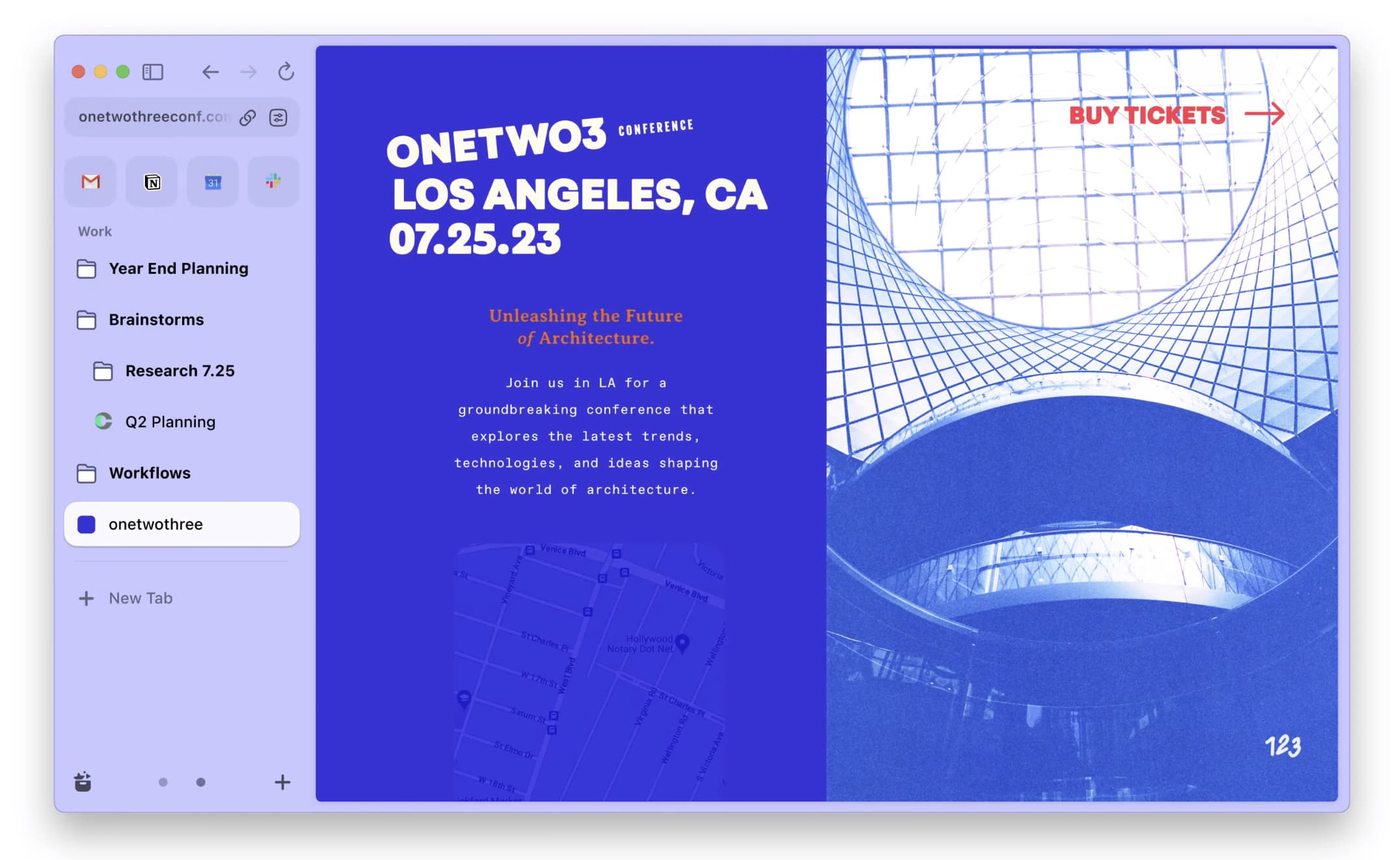Deep Dives
Did humanities enrollment at universities fall off a cliff—or was it pushed?

Hi everyone,
Our partnership with The Bentway continues: last week we published journalist and critic Anjulie Rao’s thoughtful meditation on land use, stewardship, value, and urban real estate. The story takes place in Chicago but could easily be about your city, too. Read or listen here.
Does your organization need help telling stories about the ideas that drive what you do and the insights you’ve gained while doing it? Reply to this email and let’s see how Frontier can help.
Six months ago, I published a love letter to Wikipedia. This week, I point to a heated and ongoing debate about the humanities’ place in higher education, recommend a new web browser that has just come out of waitlist-only beta, report on two recent scientific discoveries that use ultra-reflective white to mitigate heat absorption, and offer a batch of good links to round things out. As always, you can reach me by simply clicking reply. 📮
Love all ways,
Brian
Deep Dives
Several months ago, the New Yorker published a piece by Nathan Heller under a provocative title: “The End of the English Major.” Focusing on the departments at Harvard and at Arizona State University, he explores the decline in humanities enrollment at universities across the United States. It’s the kind of essay that comes around every few years, easy to shake your head at before moving on. But this one seems to have struck a nerve, eliciting responses from many corners (my alma mater published responses from no less than seven of its faculty members).
Heller spent considerable time on both campuses, speaking with professors, administrators, and students about the changes they see. The teachers suggest a wide range of possible causes for this decline as they search for ways to communicate their relevance: technology and its effects on our attention; a narrow focus on the present; straying away from art’s awe-inspiring beauty; the elevation of knee-jerk criticism over sustained engagement; a professional discourse that moves in ever-tighter circles.
These are all salient issues, but only some of these professors point out what seems clear to so many of the students: it’s about the money. They listen to the rhetoric about a lack of opportunity (and thereby financial security) for humanities graduates. They see universities disproportionately funding science and business programs. They’re approached by recruiters for the tech companies and consulting groups that have major presences on campus.
While Heller’s piece is a kaleidoscope of details and opinions, its focus on Harvard and ASU leaves important parts of the story untold. Ann Kjellberg, a longtime editor and literary commentator, “missed a discussion of the consequences of the shift toward fiscal austerity that began in the Reagan era.” In a two-part response pointedly titled “Who Killed the Humanities?” she cites budget cuts, standardized testing, and culture-war attacks on teachers and librarians as contributing to the story.
Sarah Blackwood, an English professor at Pace University in New York City, notes that “it’s hard to demonstrate the costs of this kind of understaffing, under-resourcing, and manufactured marginality, because even under these dispiriting labor conditions faculty and students continue to fill classrooms, generate revenue, produce insights, and ignite creativity, thoughtfulness, and sophisticated habits of mind.” Christopher John Newfield, then president of the Modern Language Association, concurs: “a review of the intellectual and social costs of such cuts never happens, although these costs likely exceed the small savings achieved, and by a wide margin.” He cites an astounding number: the National Endowment for the Humanities research programs budget is 0.015% of the total federal research budget—“which rounds to zero.”
Benjamin Schmidt, writing for The Atlantic in 2018, crunched the numbers and commented on this manufactured marginality, noting “how trivial the differences [in earning power] between most majors turn out to be.” He adds: “Students aren’t fleeing degrees with poor job prospects. They’re fleeing humanities and related fields specifically because they think they have poor job prospects.”
In light of Heller’s essay, some respondents, especially on social media, wondered aloud whether we shouldn’t just close humanities departments altogether. That may happen, and may even be beneficial—the departmental structure of universities is an artifact of the late nineteenth and early twentieth centuries, and it may no longer serve our needs. As Alan Jacobs, a scholar of Christianity and literature and a commentator on the academy, recently put it: “The liberal arts, and the humanities, do not live only or even primarily in universities. They can, and they do, flourish elsewhere, among people who ain’t got time for academic bullshit.”
So why think through this situation? As the cliché goes, every crisis is also an opportunity. The developments that got us to where we are, as Schmidt writes, are “changing both the humanities and the university as a whole. The decisions and rhetoric around the humanities now have especial importance, as journals, libraries, and universities have to make new sets of decisions around what shape the new humanities will take.” Ted Hadzi-Antich Jr., a professor at a community college in Texas, adds, in his response to Heller, “Higher education needs liberal education, because the good life requires freedom, and we are not born with the knowledge of how to be free.”
We can make a better world through scientific inquiry and technological breakthroughs—what today’s universities emphasize through their actions. But to know how to define better, and to include the most people possible in that definition, requires the humanities. This is an inflection point and I’ll be watching for interesting experiments, like Hadzi Antich Jr.’s The Great Questions Foundation, to share with you.
Arc 1.0

One of my personal campaigns is to get people off Chrome, the web browser that acts as a Trojan horse for Google’s tracking technologies. It may be a doomed effort, considering that Chrome claims two-thirds of all web users. But last week, Arc, the browser I’ve been using for the better part of a year, came out of private beta, giving me an exciting new alternative to suggest for Mac users. (A Windows version is coming later this year.)
In my opinion, Arc offers the deepest rethinking of the browser in at least a decade, and many of the choices its team made represent useful—even delightful!—progress. Some choices are simple but visible, like moving tabs from the top to the left-hand side or split-screen browsing. Others are deeply considered and workflow-changing, like Peek, a little window that pops up in place over tabs you only want to leave momentarily. Arc also allows you to re-style webpages, changing their colors and fonts or removing elements altogether. That tool, as well as others I don’t yet use like “easels” and in-browser notes, hint at the company’s bigger vision of—and bet on—web technologies. The long-term goal is to be an “operating system” for the web, not just a browser. Arc’s team ships new features often and discusses them openly; I’m curious and excited to see where it goes next.
For more, here’s David Pierce writing in The Verge and, at much greater length, Adam Engst in TidBITS. But, really, just give it a shot—and tell me what you think.
Whiteout

About a decade ago, British researchers discovered a material so dark that it absorbs 99.9% of light. They named it Vantablack, and controversy ensued when British artist Anish Kapoor acquired the exclusive rights to the pigment two years later. The announcement of two more recent discoveries—both involving extreme white—bring this to mind, as well as my hope that there are more useful commercial applications of these scientific discoveries than million-dollar sculptures.
Last month, researchers in Shanghai announced the discovery of a two-layer fabric that uses white silica fibers and boron nitride to reflect ninety-six percent of the sunlight that hits it. This helps dissipate heat. “At the same time, the outer layer absorbs heat from the surrounding area and emits that energy as infrared light, which also lowers the temperature under the cloak through a process called radiative cooling.” The result is a “thermal cloak” that can help keep spaces from getting too hot or too cold. Engineer Kehang Cui’s team illustrated their discovery with the cloak wrapped around a car, but, partly because of the material’s durability, there is a wide range of possible uses.
Just a few days later, the New York Times brought to a wider audience the 2020 discovery of a white paint that can reflect ninety-eight percent of sunlight. It, too, scatters light, meaning it isn’t blindingly bright. The researchers first thought of it for rooftops, as a way to cool buildings, but here, too, the opportunities seem broad.
As Cara Buckley, the Times reporter, makes clear, materials like this “cloak” and paint are not long-term solutions to the climate problems we face. Still, as engineering professor Jeremy Munday notes in her article, “This is something you can do short term to mitigate worse problems while trying to get everything under control.”
🔗 Good Links
🌀 Designer, writer, and educator Jarrett Fuller channels Stewart Brand and offers “shearing layers“ for teaching design, from visual trends to ethics
🧑🏻🎨 Kuba Szreder asks, “Why are alternatives to art schools on the rise?”
🏛️ Related: “A Chicago museum builds its own path to art education”
🚣🏻 A repurposed glasshouse, a red raft and a huge green washing machine: info and images about fifteen pavilions built to explore the UN’s Sustainable Development Goals
📐 A short video about artist Tauba Auerbach, who uses craft traditions as research methods to deepen their understanding of mathematical and scientific theories
🚲 Cycling is sustainable, but how sustainable is the bicycle?





